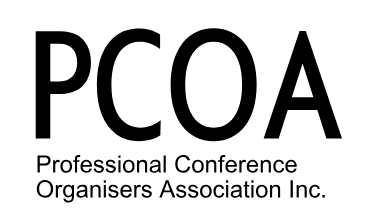New hotel development responds to record occupancies – yet are we building enough?
Australia’s tourism industry continues to be a ‘super sector’ for the nation’s economy, with strong growth in both international and domestic visitor numbers. The extreme levels of occupancy we are experiencing in Sydney and Melbourne CBD’s, translates to upwards of 100 nights per year above 95% occupancy. As we discussed at the recent PCOA conference in Brisbane, this may be welcome by the hoteliers to have a full house, yet this is a major concern for conference organizers.
The story behind our nation’s booming tourism sector and high occupancy levels has a few components. One of the main goals of the Tourism 2020 plan is to increase the value of the tourism economy to $116 billion per year.
International visitor arrivals have continued to grow at record pace, after accelerating over 2016. The 11% increase of international visitors to Australia is the highest growth rate in a generation, and is growing at nearly three times the rate of global travel. With new airlines bringing international guests to our shores, record numbers of cruise ships in our ports, and 2017 being named the Year of Tourism with China, we foresee continued inbound passenger growth.
The second major component of accommodation guest nights is from Australians, which has also seen solid growth figures for six consecutive years. This has been boosted by the low Australian dollar, which makes it relatively more expensive to take holidays overseas, and therefore Australians are trending to holiday within our country at both leisure and urban destinations. Successful promotional campaigns on food, wine and coastal tourism have contributed to a 6% increase in domestic guests at Cairns and Hobart airports, and double digit visitor night growth for both Western Australia and Southern Australia.
This growth of traveller numbers, from overseas, as well as by Aussies, is growing at a faster rate than we are building new accommodation rooms. Occupancy levels have been increasing for many years, and over the past decade we have not been building enough hotels and serviced apartments to meet this level of guests. We are starting to see this issue across a few indicators. Travellers are increasingly looking beyond traditional options for their accommodation needs, which has lead to more than 8% growth in non-traditional accommodation (private rental homes and apartments). The best known brands here in Australia are Stayz and Airbnb, yet there are many more rental platforms operating overseas which we may see here before long. Consumers have accepted these different types of overnight rooms both in the city and more often, outside of CBD areas. Conferences overseas have embraced these options for delegates, and we’re starting to see more and more companies and events support them here in Australia.
While the accommodation sales managers are enjoying the nearly full occupancy levels and ability to charge higher rates, they are also building many more hotels to fulfil the demand. Deloitte is currently tracking 143 new accommodation properties across Australia at the moment, which will see new brands from global hotel chains entering our country for the first time. The majority of these new hotels will be located around major demand drivers such as conference centres, airports, and sporting facilities. These will be a much needed and welcome option for event organizers.
Despite this large number of new projects, demand, that is guests looking for accommodation, is growing at a faster rate than we are building rooms for them. This translates to continued high levels of occupancy, especially around major events and strong business travel seasons. While there will be some relief for large room availability with 30 new accommodation properties in Melbourne, Sydney will see continued high occupancy.
If you ask an economist how we as a nation can solve this room shortage, they may tell you to start paying more for rooms, which will then attract the interest of property developers, and encourage them to build accommodation, rather than commercial or residential projects, which often have a higher return on investment.
While this may not be the answer you wanted to hear, if we start paying a bit more for a bed, we’ll soon see more options, and greater room availability for events and conferences.
About the report
The Deloitte Tourism and Hotel Market Outlook uses the forecasting, modelling and analytical expertise to create ten key market forecasts, including RevPAR, room rate and occupancy.
For further information:
C:Bryon Merzeo
Deloitte Access Economics
T: +61 415 229 200
E: bmerzeo@deloitte.com.au
